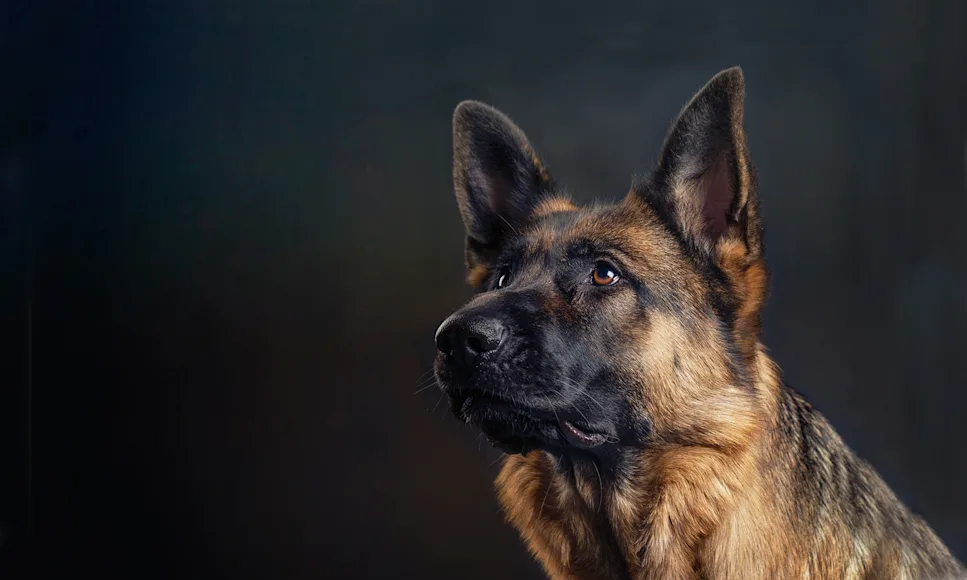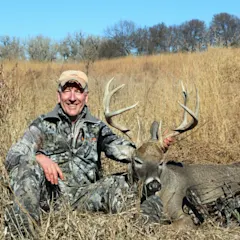Editor’s Note: Back in the spring of 2009, our late, great whitetails columnist Scott Bestul had the brilliant idea of enlisting the noses of drug-sniffing dogs to help shed light on a buck’s ability to detect human odor, as well as our ability to hide it using scent-control products. Knowing that a whitetails nose is often compared to a dog’s—and has at least as many and probably more olfactory receptor sites—he set up a series of tests. You can read the first here. Below is the second.
EVERY DEER HUNTER frets about body odor. But our attempts to manage it are all over the map. Many of us shower or spray down. Then there are those whose pre-hunt deodorization routines border on obsessive-compulsive. I wanted to know if any of it really makes any difference. So, I left it to Chance—the German Shepherd K-9 partner of Luke Sass, a sheriff's deputy In Houston County, Minnesota. Chance not only sniffs out contraband drugs; he can find a lost person or track down a runaway crook. I asked Sass if he could try to find a hunter attempting to hide his b.o. “Absolutely,” he said.
Stinking Inside the Box

Like most K-9 cops, Chance learned to find people by playing the Hot Box game. Six plywood boxes (4x4x4 feet each) are spaced evenly in two rows across the field. People enter the boxes for two to three minutes to “heat them up” with human scent. Then all but one person exits. The dog's job is to sort through the residual human odor wafting from every box and pinpoint the one hiding the bad guy, or in this case, the hunter.
We conducted three simple tests to see if certain measures could confuse or perhaps completely fool the dog. For each, Sass walked Chance to one end of the rows of boxes, unclipped the leash, and commanded the dog to “find him.” Chance swung 15 yards or so downwind to sift through the scent clues. When he pinpointed the hot box, Chance stopped, barked, and leapt at the enclosure.
Related: In Memory of F&S Whitetails Columnist Scott Bestul
Test #1: Full Blown B.O.
Hunting buddy Bob Borowiak volunteered to be the dummy, er, hunter for the day. For the first test, Bob showed up stinky. He had not showered nor attempted any other scent-control measure. He wore street clothes, laundered in regular soap and wore his everyday tennis shoes.
The Result: From the moment Chance began his swing downwind, it took him roughly 20 seconds before he was barking at Bob's box. Once he winded the hottest enclosure, there was no hesitation. He moved straight to it.
Test #2: Showered and Sprayed
For the second test, Bob did his normal pre-hunt regimen of taking a no-scent shower and dressing in camo clothes washed in a no-scent detergent and stored in a plastic tub. He also wore high rubber boots to keep his walking trail clean and to hide foot odor.
The Result: It took Chance 18 seconds to find him. Again, there was zero hesitation.
Test #3: Compulsively Clean
Our final test involved every scent-control measure we could think of. In addition to the shower, Bob wore 2 layers of activated-carbon clothing. I soaked him with scent-killing spray, and he chewed a wad of gum designed to eliminate breath odor.
The Result: It took Chance 13 seconds to find him. No hesitation.
Interpreting the Results
Sass, as well as fellow K-9 handler and bowhunter Tracy Erickson, was confident Chance would find Bob regardless of the scent-control measures. But we all expected a significant variance in the time it would take. If the measures had any effect, we assumed we'd see some hesitation on chances part, particularly given that the other boxes also contained human scent. But that didn't happen. As the test progressed, Chance got increasingly excited and perhaps ran a bit faster when swinging downwind. But once he got there, the time it took him to nail Bob was the same—more or less instantaneous.
Borowiak was bowled over by the results. But he plans to maintain his shower-and-spray routine on the prospect that it might have an impact upon how quickly or how hard a deer spooks. It’s understandable. We can't say for sure how a deer would react under the same circumstances. But what the experiment showed without a doubt is that all the scent-reducing measures in the world won't make a bit of difference to a downwind dog.
As with all dogs, Chance’s sniffer contains over 220 million olfactory receptor sites. And although it's unknown precisely how many are in a whitetail’s nose, it’s estimated at several hundred million. In other words, what a dog can smell, a deer should be able to smell even better. That fact, combine with our tests, suggests that at the very least, if a deer is downwind and reasonably close, he can smell you, no matter what. Period.
In a time when we are bombarded by testimonials claiming that product X makes downwind deer oblivious, our tests say: Probably not. According to Chance, If you’re a deer hunter thinks he can ignore the wind, you're barking up the wrong tree.
This story originally ran in the August 2011 issue of Field & Stream.


